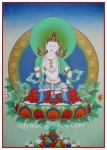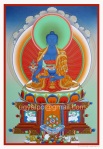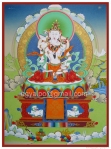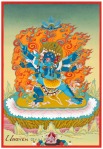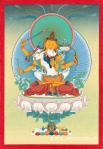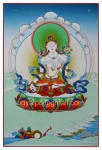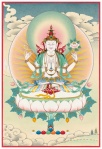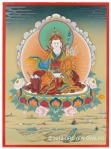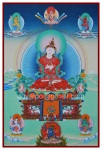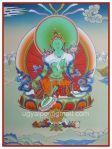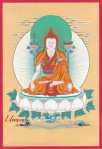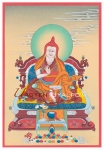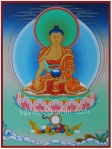A Thangka, is a Tibetan Buddhist painting on cotton, or silk appliqué, usually depicting a Buddhist deity, scene, or mandala. Thangka are traditionally kept unframed and rolled up when not on display, mounted on a textile backing somewhat in the style of Chinese scroll paintings, with a further silk cover on the front.So treated, Thangkas can last a long time, but because of their delicate nature, they have to be kept in dry places where moisture will not affect the quality of the silk.
Most Thankas are relatively small, comparable in size to a Western half-length portrait, but some are extremely large, several meters in each dimension, these were designed to be displayed, typically for very brief periods on a monastery wall, as part of religious festivals.
Most Thankas were intended for personal meditation or instruction of monastic students. They often have elaborate compositions including many very small figures.
TYPES OF THANGKA
Based on technique and material, thangkas can be grouped by types. Generally, they are divided into two broad categories: those that are painted (Tib.) bris-tan—and those made of silk, either by appliqué or embroidery.
Thangkas are further divided into these more specific categories:
- Painted in colors (Tib.) tson-tang—the most common type
- Appliqué (Tib.) go-tang
- Black Background—meaning gold line on a black background (Tib.) nagtang
- Blockprints—paper or cloth outlined renderings, by woodcut / woodblock printing
- Embroidery (Tib.) tsem-thang
- Gold Background—an auspicious treatment, used judiciously for peaceful, long-life deities and fully enlightened buddhas
- Red Background—literally gold line, but referring to gold line on a vermillion (Tib.) mar-tang

